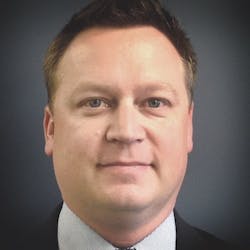About the author:
Seth Brown is principal and founder of Storm and Stream Solutions. Brown can be reached at [email protected].
As we continue to see the full impact of Hurricane Florence unfold, it is clear that the biggest threat to public safety associated with this storm has been—and will continue to be—not from high winds, but from excessive runoff leading to water quality and flooding impacts. In light of this, we should consider the nature of runoff-related impacts and take stock of the condition of storm water systems.
In recent years, coastal hurricane and “superstorm” events have been couched in the context of catastrophes impacting urban areas. Think of Katrina and New Orleans, Sandy and New York City, Harvey and Houston, and even smaller cities impacted by historically intense rainfall events, such as Ellicott City, Md., in 2016 and in 2018. All are examples of flooding impacts to a city or urban area. Clearly urban areas from New Bern, N.C., to Myrtle Beach, S.C., are affected by Florence, but significant impacts are being felt in rural areas as well.
Going beyond flooding, the potential for runoff to overwhelm hog and pig waste lagoons is a specific concern in rural North Carolina at this time. North Carolina has more hog and pig farms than any other state in the U.S. except Iowa, and the pork industry employs more than 13,000 people in the state, making it clearly an important and sizeable economic force there. The most common manner to control waste generated by hogs and pigs is through the use of lagoons, which are pits or ponds surrounded with a berm that has no overflow. These lagoons are designed to capture and treat the waste through anaerobic digestion. To provide a sense of scale, more than 10 billion lb of wet animal waste is produced in North Carolina, and Duplin County, located in the southeastern part of the state, has 45 times more hogs than it does people. Currently, there is conflicting information regarding hog lagoons being flooded out; however, history shows that it is very likely that these lagoons are discharging. Consider that Hurricane Floyd flooded lagoons in 1999, as did Hurricane Matthew in 2016. If discharges occur from these facilities at significant levels, the impact to public health and ecosystem integrity will be severe.
On the urban runoff front, the Water Environment Federation (WEF) recently completed the first-ever national survey of the Municipal Separate Storm Sewer System (MS4) sector to capture the needs of this oft-forgotten contingent. The findings reflect a hunger for funding and financing solutions and sources.
This should come as no surprise to those familiar with the storm water sector, as only approximately 1,500 to 2,000 of the regulated 7,500 MS4 communities have dedicated revenue sources of any kind. Close to half of all survey respondants stated that additional financial resources were needed for their programs, with the smaller communities identifying needs of more than 135% of their current budget to fully fund their programs. This lack of funding highlights the needs in this sector, which are all the more significant since EPA considers urban storm water runoff pollution to be the only growing source of water pollution across many parts of the country. Unfortunately, up to this point, the storm water sector has not been included in larger infrastructure discussions. A case in point is that storm water is not included as a separate infrastructure sector in the American Society of Civil Engineers (ASCE) Infrastructure Report Card; however, the WEF survey may help to change this as ASCE considers adding storm water in its next report card edition.
William Ruckelshaus, the first EPA administrator, in his 2010 Wall Street opinion piece titled “A New Shade of Green,” noted that while 85% of the water quality impairments in the U.S. in 1970 were from traditional point sources (industrial effluent, wastewater discharges, etc.), a shift has occurred, and now 85% of impairments are associated with urban and agricultural runoff. This shift clearly is tied to our lack of leadership, as a country, to address runoff-driven pollution and flooding issues.
Ruckelshaus refers to runoff-generated pollution as an “intractable modern problem,” and that to address this issue, it “will take a level of public understanding and knowledge of the relationship between the way we live and what we are doing to our natural systems, coupled with a sense of responsibility of stewardship of our planet, that does not currently exist.” Hopefully, we as a country will live up to Ruckelshaus’ vision for environmental stewardship before it is too late.
